If you learnt to read you'd know that, and it also runs on xbox 360 too, moron, so how is it cell based exactly?
65 posts
• Page 2 of 3 • 1, 2, 3
Crysis 2 PC > Crysis 2 consoles
If you learnt to read you'd know that, and it also runs on xbox 360 too, moron, so how is it cell based exactly?
-

Chrissie Pillinger - Posts: 3464
- Joined: Fri Jun 16, 2006 3:26 am
Anyways, SSAA for the win anyway, since that blows up the image to a huge resolution, then rescales it to the resolution requires and uses the huge rez image to place the right colours in the right places. Can't run on the ps3 at all of course, since it requires a powerful gpu and large amounts of vRAM.
-

Jade - Posts: 3520
- Joined: Mon Jul 10, 2006 6:42 am
I really don't care about what platform will be superior, I just want to play Crysis 2!
PS3 version will be superior in it's own way. If Crytek can achieve what GT5 has, I'll be well impressed. If the PC version still out stands, then I'll still be impressed.
Plus, I'm not liking these topics nowadays. You get a PC fanboy and a PS3 fanboy.
PS3 version will be superior in it's own way. If Crytek can achieve what GT5 has, I'll be well impressed. If the PC version still out stands, then I'll still be impressed.
Plus, I'm not liking these topics nowadays. You get a PC fanboy and a PS3 fanboy.
-

David John Hunter - Posts: 3376
- Joined: Sun May 13, 2007 8:24 am
Well, if the ps3 version remotely gets close to the pc version then crytek have failed, it's not to be a fanboy, but it's a fact. They are claiming to push each system, and my gpu is around 8-12x more powerful than the ps3's. So it's be hard for them to argue that they've pushed the pc in that case.
So i don't know how a ps3 version will be superior 'in it's own way' maybe in the way it'll be better than the xbox (which it will of course)? but that's like saying the guy who goes on to work at mcdonalds for the rest of their life and never even becoming a manager did 'well in their own way' (i.e. they didn't).
maybe in the way it'll be better than the xbox (which it will of course)? but that's like saying the guy who goes on to work at mcdonalds for the rest of their life and never even becoming a manager did 'well in their own way' (i.e. they didn't).
anyways, bit more info on the problems with using MLAA when put in an engine that didn't intrinsically support it from the start (frostbite):
'I did an experimental implementation of MLAA in Frostbite 2 a few weeks ago just because I wanted to see how it looks like on moving pictures.
On still pictures it looks amazing but on moving pictures it is more difficult as it is still just a post-process. So you get things like pixel popping when an anti-aliased line moves one pixel to the side instead of smoothly moving on a sub-pixel basis. Another artifact, which was one of the most annoying is that aliasing on small-scale objects like alpha-tested fences can't (of course) be solved by this algorithm and quite often turns out to look worse as instead of getting small pixel-sized aliasing you get the same, but blurry and larger, aliasing which is often even more visible.
Also had some issues with the filter picking up horizontal and vertical lines in quite smoothly varying textures and anti-aliased that. Again when the picture is moving this change is amplified and looks a lot worse than relying on just the texture filtering. Though I think for this case one can tweak the threshold more to skip most of those areas.
I still think the technique has promise, esp. in games that don't have as much small-scale aliasing sources. But the importance of MSAA remains as you really want sub-pixel rendering to stably improve on small-scale aliasing in moving pictures.
Or some kind of temporal coherence in the MLAA filter, which could be an interesting topic for future research. In games we aren't primarily interested in perfect anti-aliasing of still pictures, but flicker-free rendering of pictures in motion.'
Meaning that MLAA is hard to work with and must be accounted for from the start, on consoles where there's no guarantee that both consoles will handle it, it's generally not worth it. Plus PC's don't need it, even if MLAA does somehow equal MSAA in every way (which it doesn't, but is a nice imitation for low resolutions) they still have MSAA.
So i don't know how a ps3 version will be superior 'in it's own way'
anyways, bit more info on the problems with using MLAA when put in an engine that didn't intrinsically support it from the start (frostbite):
'I did an experimental implementation of MLAA in Frostbite 2 a few weeks ago just because I wanted to see how it looks like on moving pictures.
On still pictures it looks amazing but on moving pictures it is more difficult as it is still just a post-process. So you get things like pixel popping when an anti-aliased line moves one pixel to the side instead of smoothly moving on a sub-pixel basis. Another artifact, which was one of the most annoying is that aliasing on small-scale objects like alpha-tested fences can't (of course) be solved by this algorithm and quite often turns out to look worse as instead of getting small pixel-sized aliasing you get the same, but blurry and larger, aliasing which is often even more visible.
Also had some issues with the filter picking up horizontal and vertical lines in quite smoothly varying textures and anti-aliased that. Again when the picture is moving this change is amplified and looks a lot worse than relying on just the texture filtering. Though I think for this case one can tweak the threshold more to skip most of those areas.
I still think the technique has promise, esp. in games that don't have as much small-scale aliasing sources. But the importance of MSAA remains as you really want sub-pixel rendering to stably improve on small-scale aliasing in moving pictures.
Or some kind of temporal coherence in the MLAA filter, which could be an interesting topic for future research. In games we aren't primarily interested in perfect anti-aliasing of still pictures, but flicker-free rendering of pictures in motion.'
Meaning that MLAA is hard to work with and must be accounted for from the start, on consoles where there's no guarantee that both consoles will handle it, it's generally not worth it. Plus PC's don't need it, even if MLAA does somehow equal MSAA in every way (which it doesn't, but is a nice imitation for low resolutions) they still have MSAA.
-

clelia vega - Posts: 3433
- Joined: Wed Mar 21, 2007 6:04 pm
Well maybe if crytek actually used the gpu in the ps3's CPU, they could achieve more...
-

Amber Hubbard - Posts: 3537
- Joined: Tue Dec 05, 2006 6:59 pm
Guys, if you can't put your point across without abusing each other then the thread will be removed, simple as that.
Talon95, i've already removed two of your last abusive posts from this and another thread. Cut it out, please.
Talon95, i've already removed two of your last abusive posts from this and another thread. Cut it out, please.
-

Beth Belcher - Posts: 3393
- Joined: Tue Jun 13, 2006 1:39 pm
[quote]Guys, if you can't put your point across without abusing each other then the thread will be removed, simple as that.
Talon95, i've already removed two of your last abusive posts from this and another thread. Cut it out, please.[/quote]
:'(
Anyway, sonyguy, I would gladly take a video of Crysis/Metro 2033 and you can take a video of Uncharted 2. Then I can show you how much better the PC is. I would base your links of some modern day facts instead of posting crap like "ps3 beats the 6800gt and Pentium 3". When you post stuff like that which is clearly outdated, then it makes you look bad. The only thing the ps3 has over the pc is the exclusives and the affordability of bluray. You are comparing Volkswagens to Mercedes Benz... Volkswagen isn't gonna win.
Talon95, i've already removed two of your last abusive posts from this and another thread. Cut it out, please.[/quote]
:'(
Anyway, sonyguy, I would gladly take a video of Crysis/Metro 2033 and you can take a video of Uncharted 2. Then I can show you how much better the PC is. I would base your links of some modern day facts instead of posting crap like "ps3 beats the 6800gt and Pentium 3". When you post stuff like that which is clearly outdated, then it makes you look bad. The only thing the ps3 has over the pc is the exclusives and the affordability of bluray. You are comparing Volkswagens to Mercedes Benz... Volkswagen isn't gonna win.
-

CHangohh BOyy - Posts: 3462
- Joined: Mon Aug 20, 2007 12:12 pm
PC version is always better yes. For single player, I will play crysis 2 on pc. However, i've experienced that multiplayer is much more fun on console with friends than on pc, even without mouse and keyboard. So for the multiplayer, I will play on ps3.
-
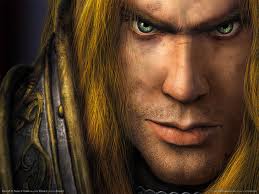
Adrian Morales - Posts: 3474
- Joined: Fri Aug 10, 2007 3:19 am
[quote]PC version is always better yes. For single player, I will play crysis 2 on pc. However, i've experienced that multiplayer is much more fun on console with friends than on pc, even without mouse and keyboard. So for the multiplayer, I will play on ps3.[/quote]
No dedicated servers for multiplayer ;S on consoles
and small player limit like 12-16
No dedicated servers for multiplayer ;S on consoles
and small player limit like 12-16
-

Javier Borjas - Posts: 3392
- Joined: Tue Nov 13, 2007 6:34 pm
[quote]PC version is always better yes. For single player, I will play crysis 2 on pc. However, i've experienced that multiplayer is much more fun on console with friends than on pc, even without mouse and keyboard. So for the multiplayer, I will play on ps3.[/quote]
And havnt you ever heard of steam?
in my opinion its better than PSN or GFWL ;s
And havnt you ever heard of steam?
in my opinion its better than PSN or GFWL ;s
-
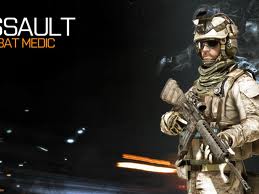
Rebecca Dosch - Posts: 3453
- Joined: Thu Jan 18, 2007 6:39 pm
Indeed, battlefield bad company 2 is absolutely awful on the consoles for multiplayer. In the end it does depend on what your friends play i guess, since im at uni, most of my friends are 'real' gamers in the sense that their interest in gaming extends beyond the game itself including the hardware and with less demands on bills ect. they are able to afford the pay more noew, less over time approach of pc gaming, so are pc gamers primarily, obviously.
-

Nomee - Posts: 3382
- Joined: Thu May 24, 2007 5:18 pm
[quote]Also MLAA (cell processor based AA) achieves 2 to 4x better AA then 16x MSAA just so you people know.[/quote]
What? WHAT? WHAAT?!! AA Rendered in half the game's resolution in no way is better. Maybe it looks better to you, because it's blurred; but if you look in to 16x AA (ALL the anti aliasing is rendered in the resolution the program is running in, making it look much better than the console's AA.) on the PC and a high resolution; PC wins again.
What? WHAT? WHAAT?!! AA Rendered in half the game's resolution in no way is better. Maybe it looks better to you, because it's blurred; but if you look in to 16x AA (ALL the anti aliasing is rendered in the resolution the program is running in, making it look much better than the console's AA.) on the PC and a high resolution; PC wins again.
-

Pixie - Posts: 3430
- Joined: Sat Oct 07, 2006 4:50 am
[quote]@CorruptSoul Gran turismo 5 runs at native 1080p at 60fps during gameplay caught up with all the pd interviews & maybe you would be up to date like the rest of us gt fans that follow news on gt5.[/quote]
[quote]maybe catch up to the rest of us before you talk about something you don't understand.[/quote]
[quote][quote]
[quote]@Firepowzer consoles can do just about everything entertainment wise as a pc can just as good.[/quote]
Consoles might be capable of it, but pc's do it faster and with better quality [/quote]
[/quote]
[/quote]
[quote]Also MLAA (cell processor based AA) achieves 2 to 4x better AA then 16x MSAA just so you people know.[/quote]
You failed and invented the quadruplepost there...
[quote]maybe catch up to the rest of us before you talk about something you don't understand.[/quote]
[quote][quote]
[quote]@Firepowzer consoles can do just about everything entertainment wise as a pc can just as good.[/quote]
Consoles might be capable of it, but pc's do it faster and with better quality
[/quote]
[quote]Also MLAA (cell processor based AA) achieves 2 to 4x better AA then 16x MSAA just so you people know.[/quote]
You failed and invented the quadruplepost there...
-

krystal sowten - Posts: 3367
- Joined: Fri Mar 09, 2007 6:25 pm
No SJentZ you failed to comprehend the playstation 3's capabilities to their fullest extent just like many others in these threads have.
-

Damned_Queen - Posts: 3425
- Joined: Fri Apr 20, 2007 5:18 pm
@ thatsonyguy1981
Kid, you must be totally nuts if you thimk a 300 EUR Console could beat a 1600 Eur Pc. Thats like a comparison between a ferrari an a Vw Golf.
Dont you think Nvidia and Ati used 5 yeats of invention zo beat the Ps3 Gpu? Even the 8800 GTX was clearly way faster that that RSX and that card is 4 years old!!! You think you could fly to the moon with the Ps3 only because of the cell? For example... my CPU costs 350 EUR... THE WHOLE PS3 COSTS 299!!! Its a different world my friend!!! Your Cell CPU reaches only 14,63 GFLOPS @ Linpack Benchmarks. So its just as fast as a 3,6 GHz Intel Pentium 4 (Singlecore). The Cell is good for breaking codes by bruteforce because of its many SPEs. But it svcks for gaming.
Its like using a cray supercomputer to play Doom 3. Its just not invented for that kind of use. Why do you think so many programmers hate optimizing everything for the ps3? A strong Cpu is nothing without a even stronger GPU and enough Ram to keep the speed alive. The Ps3 architecture is a disaster in my opinion. But if you still want to believe in santa claus and the man in the moon...then just keep on believing your Ps3 could beat any 1000 Eur Pc.
Kid, you must be totally nuts if you thimk a 300 EUR Console could beat a 1600 Eur Pc. Thats like a comparison between a ferrari an a Vw Golf.
Dont you think Nvidia and Ati used 5 yeats of invention zo beat the Ps3 Gpu? Even the 8800 GTX was clearly way faster that that RSX and that card is 4 years old!!! You think you could fly to the moon with the Ps3 only because of the cell? For example... my CPU costs 350 EUR... THE WHOLE PS3 COSTS 299!!! Its a different world my friend!!! Your Cell CPU reaches only 14,63 GFLOPS @ Linpack Benchmarks. So its just as fast as a 3,6 GHz Intel Pentium 4 (Singlecore). The Cell is good for breaking codes by bruteforce because of its many SPEs. But it svcks for gaming.
Its like using a cray supercomputer to play Doom 3. Its just not invented for that kind of use. Why do you think so many programmers hate optimizing everything for the ps3? A strong Cpu is nothing without a even stronger GPU and enough Ram to keep the speed alive. The Ps3 architecture is a disaster in my opinion. But if you still want to believe in santa claus and the man in the moon...then just keep on believing your Ps3 could beat any 1000 Eur Pc.
-
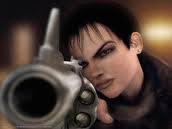
Bitter End - Posts: 3418
- Joined: Fri Sep 08, 2006 11:40 am
I just dont understand the whole whats best thiing.
Why in the name of all thats Crytek, must we have the mines better than yours threads, its just a waste of time.
My Son thinks his eggbox rules and thats fine by me, i'm quite happy with my PC, No argument, period.....
It just always garantees to get out of hand and abusive , they aint no need, just be happy the game looks great and hope it pays as well as it looks, no matter what your setup.
SIMPLE...
Why in the name of all thats Crytek, must we have the mines better than yours threads, its just a waste of time.
My Son thinks his eggbox rules and thats fine by me, i'm quite happy with my PC, No argument, period.....
It just always garantees to get out of hand and abusive , they aint no need, just be happy the game looks great and hope it pays as well as it looks, no matter what your setup.
SIMPLE...
-

Gemma Flanagan - Posts: 3432
- Joined: Sun Aug 13, 2006 6:34 pm
bigboulder the cell was designed to be used in a rage of electronic devices watch both videos & see & hear for yourself.
http://www.youtube.com/watch?v=z48089sYvvo
http://www.youtube.com/watch?v=gV_95-rmYNo
http://www.youtube.com/watch?v=z48089sYvvo
http://www.youtube.com/watch?v=gV_95-rmYNo
-

Allison Sizemore - Posts: 3492
- Joined: Wed Jul 19, 2006 6:09 am
let's all agree to disagree & move on from all this my platform is better then yours non sense because it's getting way out of control & is just plain stupid so i choose to end it from my end once & for all.
-
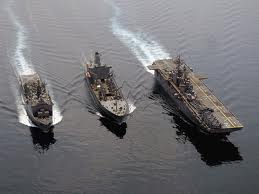
Bambi - Posts: 3380
- Joined: Tue Jan 30, 2007 1:20 pm
Well done sonyguy  but please remember we are not saying the ps3 svcks, we are saying it's not as good as you think, which is correct. Anyways crysis 2 will look good on ps3 for sure, but it's never going to beat the pc version, it's just the way it is.
but please remember we are not saying the ps3 svcks, we are saying it's not as good as you think, which is correct. Anyways crysis 2 will look good on ps3 for sure, but it's never going to beat the pc version, it's just the way it is.
The people who made the components in the ps3 make pc components too anyway, either directly (nvidia) or via research (IBM) the cell processor was shown not to work in pc's due to how rigid the design structure is, it is more like a gpu than a cpu, meaning it is pretty difficult to work with as a true pc cpu (due to no ability to swap tasks at will, it must always finish the current one, hence why xp takes around 9 minutes to load on a ps3). So the cell is more a fixed function processor, which was amazing for 2006! it's the reason the ps can still produce some great graphics. But it's no PC beater
it's the reason the ps can still produce some great graphics. But it's no PC beater 
The people who made the components in the ps3 make pc components too anyway, either directly (nvidia) or via research (IBM) the cell processor was shown not to work in pc's due to how rigid the design structure is, it is more like a gpu than a cpu, meaning it is pretty difficult to work with as a true pc cpu (due to no ability to swap tasks at will, it must always finish the current one, hence why xp takes around 9 minutes to load on a ps3). So the cell is more a fixed function processor, which was amazing for 2006!
-

TASTY TRACY - Posts: 3282
- Joined: Thu Jun 22, 2006 7:11 pm
Yeah i saw this i hope they make it right for PC and Sandbox 3 and of course huge modding support , some leftover code and JET AIRCRAFT would be cool to mod in
NOW JUST MAKE NEW FORUMS PLEASE ! for release it has to be.
This comment-like posting is weird , well , i don't have orientation what's where.
NOW JUST MAKE NEW FORUMS PLEASE ! for release it has to be.
This comment-like posting is weird , well , i don't have orientation what's where.
-

oliver klosoff - Posts: 3436
- Joined: Sun Nov 25, 2007 1:02 am
they will all be the same game just different here and there ,what i think when it comes to looks pc will look very good,ps3 will look good and xbox360 will look fair.,
-
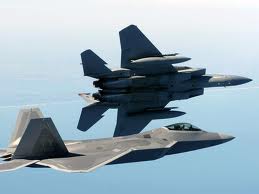
Taylah Illies - Posts: 3369
- Joined: Fri Feb 09, 2007 7:13 am
[quote]Yeah i saw this i hope they make it right for PC and Sandbox 3 and of course huge modding support , some leftover code and JET AIRCRAFT would be cool to mod in
NOW JUST MAKE NEW FORUMS PLEASE ! for release it has to be.
This comment-like posting is weird , well , i don't have orientation what's where.[/quote]
If you feel a little uneasy with the forums, I suggest you make a topic in the Feedback section of this site. It would be helpful for the web designers on here to see what problems all of us face.
I'm glad this stupid argument ends here. Consoles have good points and bad points. PC has good points and bad points. Let's all just accept that and move on.
NOW JUST MAKE NEW FORUMS PLEASE ! for release it has to be.
This comment-like posting is weird , well , i don't have orientation what's where.[/quote]
If you feel a little uneasy with the forums, I suggest you make a topic in the Feedback section of this site. It would be helpful for the web designers on here to see what problems all of us face.
I'm glad this stupid argument ends here. Consoles have good points and bad points. PC has good points and bad points. Let's all just accept that and move on.
-

Sun of Sammy - Posts: 3442
- Joined: Mon Oct 22, 2007 3:38 pm
What fool would doubt the PC version would be the superior version?
I don't even own a PC... just a lowly Mac. And I know this.
Still looking forward to playing a (albeit inferior) version on my 360 or PS3.
I don't even own a PC... just a lowly Mac. And I know this.
Still looking forward to playing a (albeit inferior) version on my 360 or PS3.
-

J.P loves - Posts: 3487
- Joined: Thu Jun 21, 2007 9:03 am
@ thatsonyguy...
Yes.. please end it.
Next time try to find "real" facts and dont waste your time by watching too much sony propaganda movies
The Linpack Benchmarks dont lie and they exist since the 1970s.
And by the way.. if the cell is so powerfull as you think it is, then tell me why is the whole ps3 cheaper than actual high end processors?
Your thesis about the cell is against all laws of economy.
So its not an "what platform is better" discussion.. its about how can i be so ignorant to face reality discussion! Do you beleive every washing powder on the tv wahses better than all the others? Do you believe Coca Cola is the best drink of all time? Nobody would! Because intelligent people know, how advertisemant works! If you dont believe me please write a email to sony USA or JPN and ask why they could sell a console that is technically worth 1600 EUR for only 299. I would bet the guys @ the custumer support will laugh theyr asses of for a long time.
Yes.. please end it.
Next time try to find "real" facts and dont waste your time by watching too much sony propaganda movies
The Linpack Benchmarks dont lie and they exist since the 1970s.
And by the way.. if the cell is so powerfull as you think it is, then tell me why is the whole ps3 cheaper than actual high end processors?
Your thesis about the cell is against all laws of economy.
So its not an "what platform is better" discussion.. its about how can i be so ignorant to face reality discussion! Do you beleive every washing powder on the tv wahses better than all the others? Do you believe Coca Cola is the best drink of all time? Nobody would! Because intelligent people know, how advertisemant works! If you dont believe me please write a email to sony USA or JPN and ask why they could sell a console that is technically worth 1600 EUR for only 299. I would bet the guys @ the custumer support will laugh theyr asses of for a long time.
-

Honey Suckle - Posts: 3425
- Joined: Wed Sep 27, 2006 4:22 pm
why don't you stop acting like a dam fool & stop dragging this on further & move on please & same goes to the rest of you on here doing the same dam carp!
-

Michael Russ - Posts: 3380
- Joined: Thu Jul 05, 2007 3:33 am
65 posts
• Page 2 of 3 • 1, 2, 3
